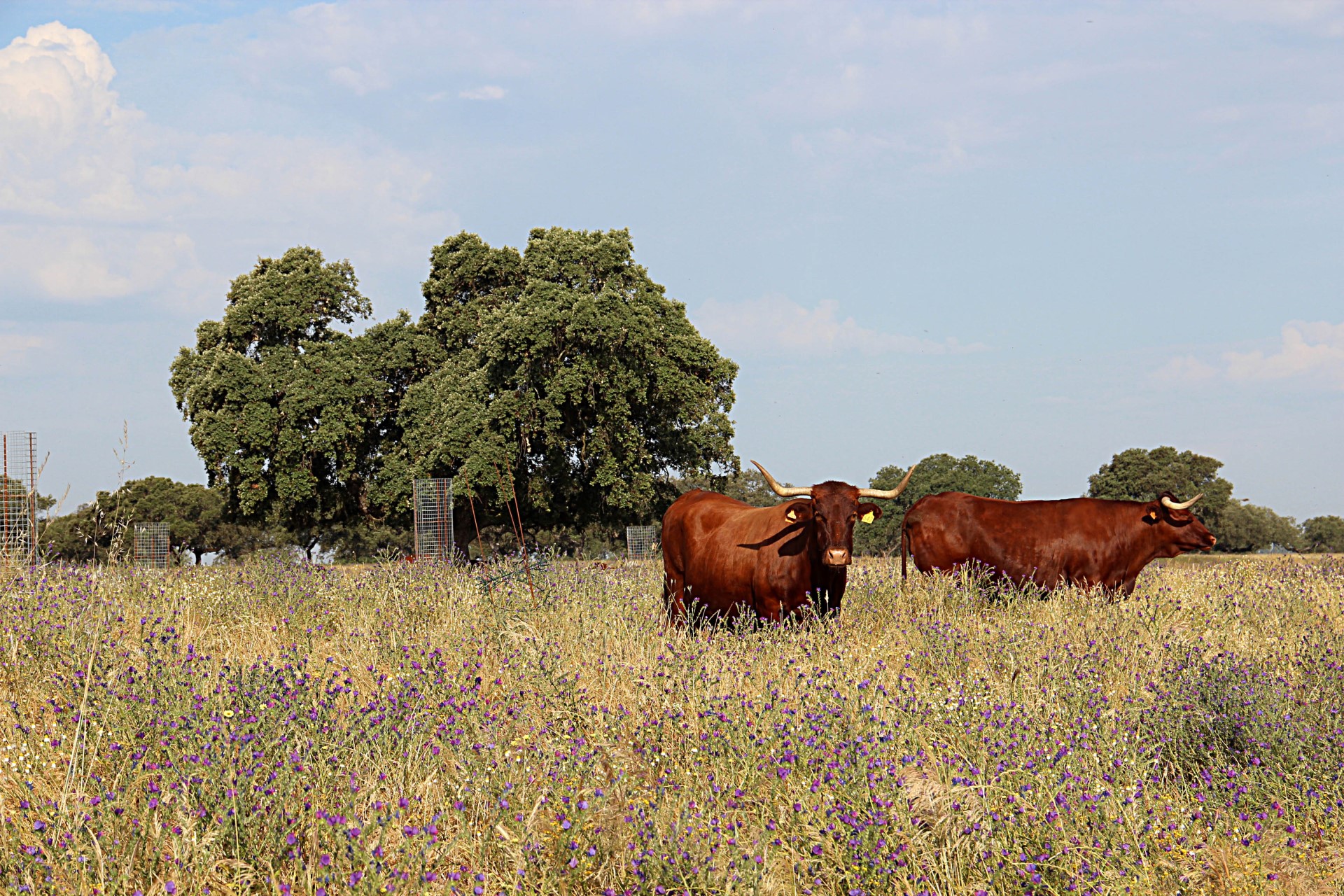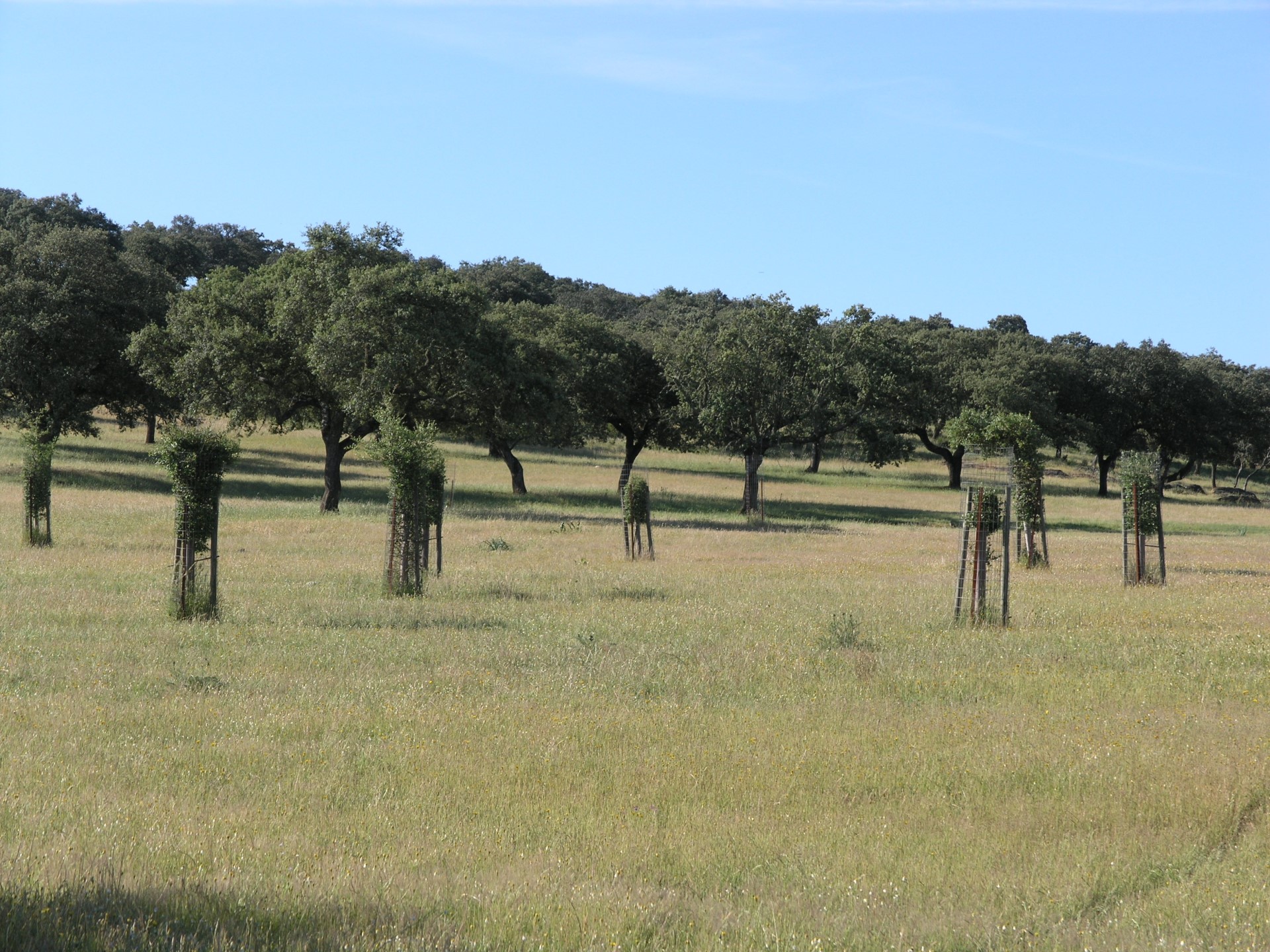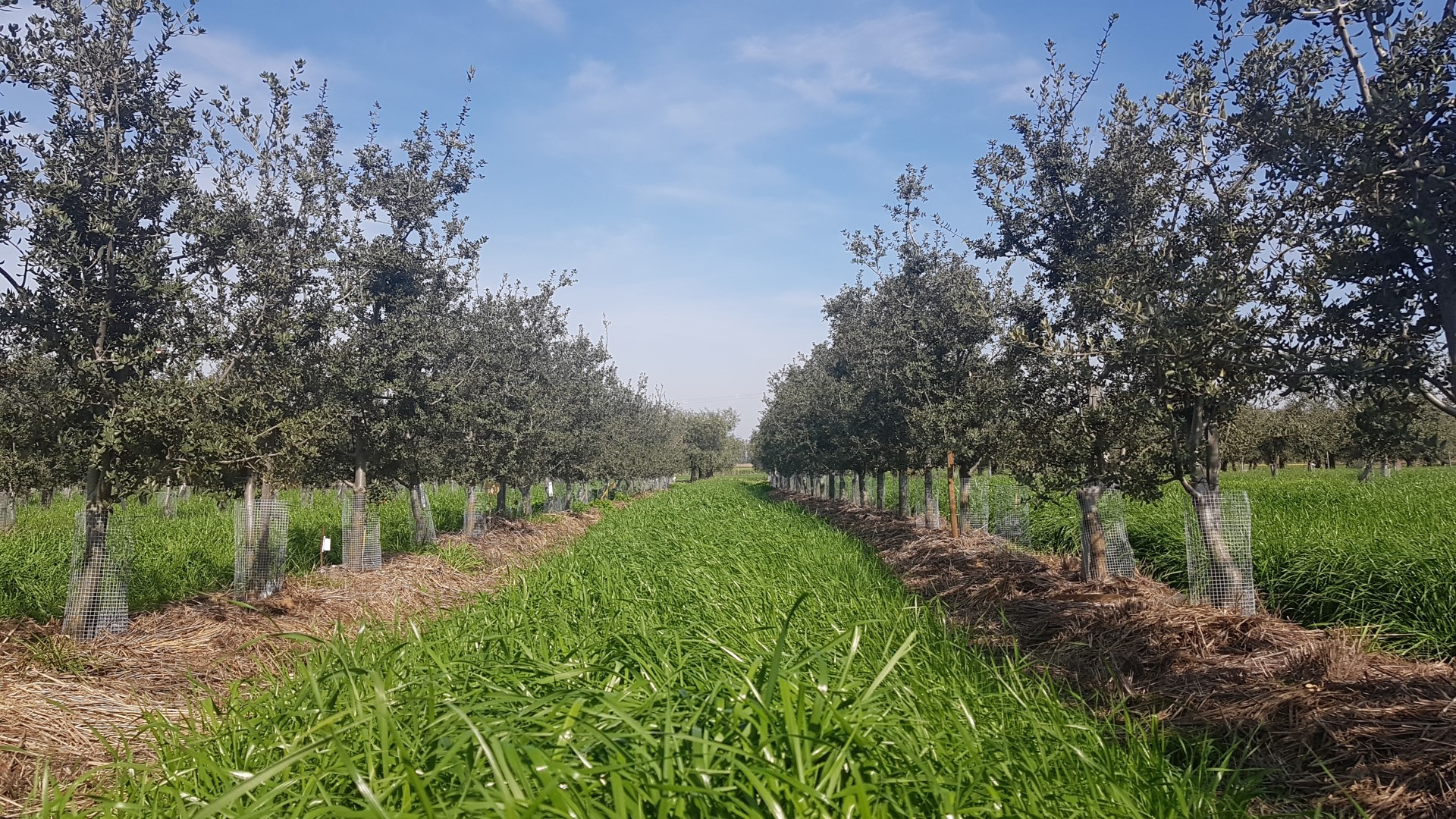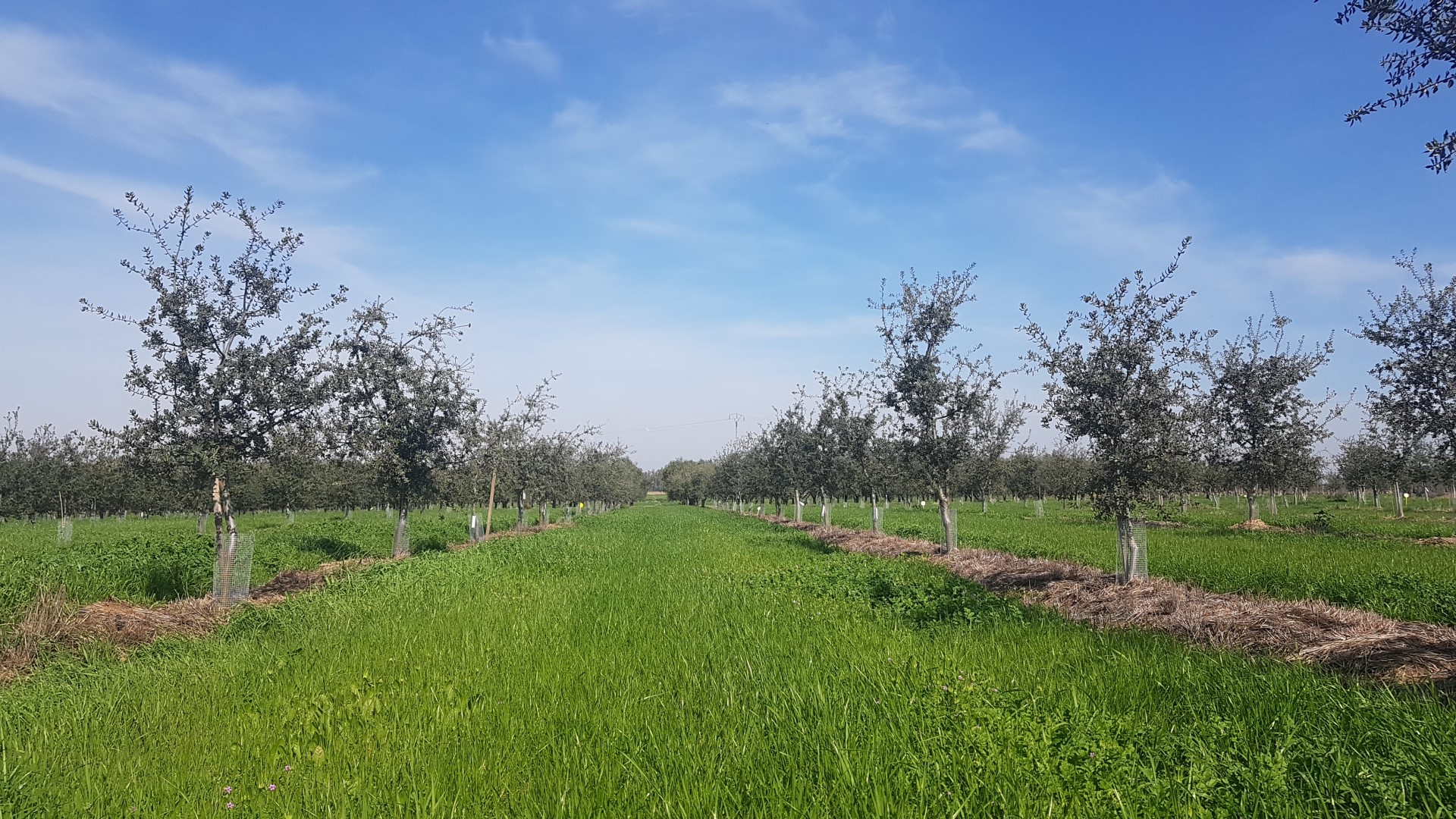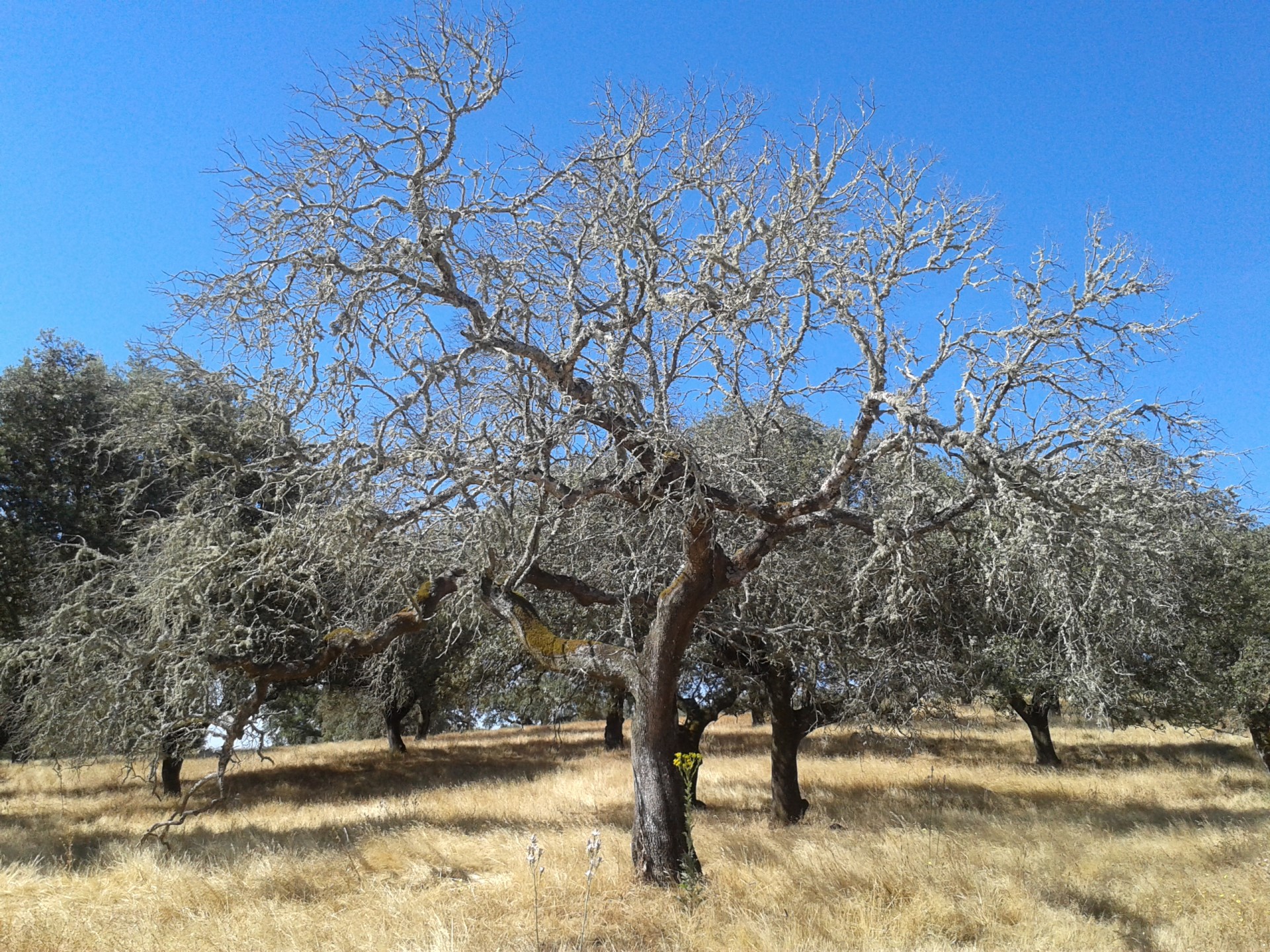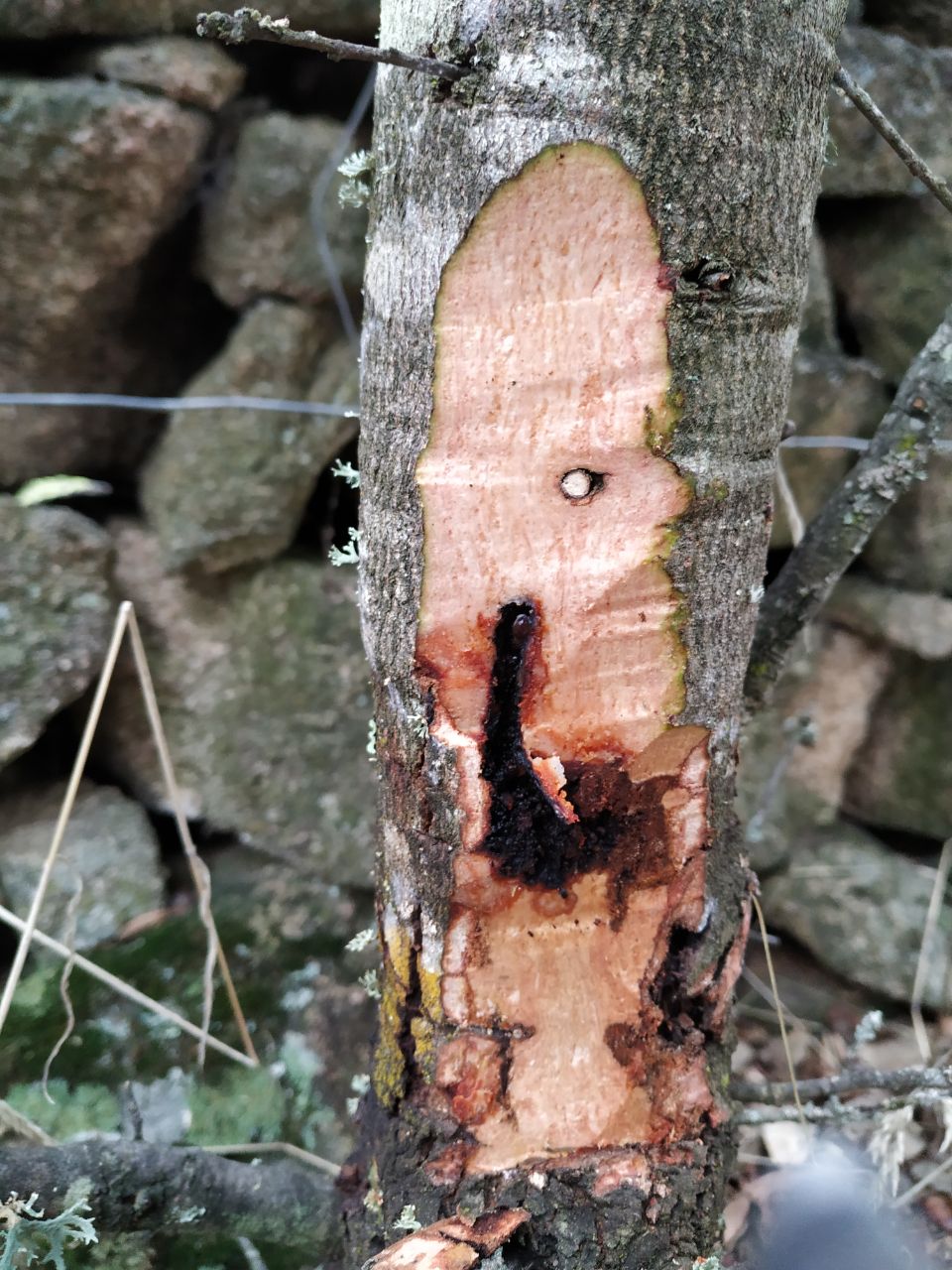
Dehesa
 General information
General information
Dehesa, known as Montado in Portugal, is one of the most singular landscapes of the Southwest of the Iberian Peninsula, spreading across over 4 million hectares. Extremadura is the region with the most extensive area (nearly 1.5 million hectares).
The Dehesa is an agrosilvopastoral system with multiple uses, where pigs, sheep, cattle or goats are reared using the extensive farming system. Its vegetation, mainly integrated by holm and cork oaks, promotes the development of pastures on which the livestock and hunting species feed. Dehesa is an outstanding example of biodiversity conservation. While numerous animal and plant species (trees, shrubs and herbaceous plants) inhabit it, it also provides humans with important goods and services: extensive livestock farming, crop farming, cork, honey, firewood and charcoal, game, aquaculture through its ponds and troughs, tourism and fungi consumption, amongst others.
For more information on dehesas, please visit the Dehesa Montado Observatory.
 Comprehensive management of dehesas
Comprehensive management of dehesas
The Dehesa, as a sustainable model of development with high ecological, economic and social value, requires the use of sustainable management systems and adequate farming, plant health and forestry practices in order to be successfully preserved. With this objective in mind, CICYTEX develops lines of work with a focus on forestry and management which cover both the handling of tree communities and the integrated handling of livestock, soil and pastures.
In addition to its management, the economic and environmental value recognition of this ecosystem and its products is essential for the performance and continuance of dehesas. As a way of supporting these lines of study and integrating the management of the other activities relating to dehesa, the centralisation and update of the information associated with this ecosystem and the creation of working networks, cooperation structures and synergies between groups and institutions are a way of moving forward.
 Restoration
Restoration
One of the main issues affecting dehesas today is the aging of their tree communities and insufficient natural restoration. It is no surprise that in order to ensure the adequate preservation and continuance of the system, tree restoration is essential. Densification and repopulation of holm and cork oaks with high-quality specimens are measures that contribute in scenarios of insufficient natural restoration.
As a restoration support measure, CICYTEX, through the Cork, Wood and Charcoal Institute, maintains agreements with forest nurseries producing holm and cork oak so they can grow mycorrhizal plants under quality guarantees.
 Irrigation of holm oaks
Irrigation of holm oaks
Acorn production in intensive irrigation and fertigation systems is an innovative and daunting idea. This method promotes rapid tree development and start of production, as well as increasing acorn availability. The first necessary step is to have clone plant material, which ensures uniformity and lesser times to start production as it skips the early growing period of seed planting. At CICYTEX La Orden, we are developing a line of research whereby we study the various grafted clones both in intensive irrigation systems and in hedgerow systems, and monitor water and fertiliser dosages as well as the optimum handling techniques employed in these new systems.
 Estudios sobre la seca provocada por Fitóftora (Phytophthora cinnamomi)
Estudios sobre la seca provocada por Fitóftora (Phytophthora cinnamomi)
La enfermedad de la seca destaca por el daño económico y ambiental que causa, provocando el decaimiento y muerte de las encinas y alcornoques. CICYTEX, a través de su centro ICMC, trabaja en la mejora de la detección y diagnóstico de la enfermedad, especialmente para obtener conocimiento del comportamiento de esta epidemia forestal y para su control.
En esta línea, se han analizado los patrones espaciotemporales de la propagación de la enfermedad a distintas escalas. Por otra parte, se estudia también la respuesta bioquímica y alelopática de las plantas a la enfermedad y se están seleccionando individuos con un historial de exposición y supervivencia a la enfermedad con vistas a la mejora genética frente a Fitóftora.
 Plagas
Plagas
La detección de posibles plagas emergentes es también una importante ayuda a la hora de combatir futuros daños. Recientemente, un estudio realizado en CICYTEX ha evidenciado la proliferación de sésidos en el arbolado. Los sésidos (Sesiidae) son una familia de Lepidópteros englobada en lo que se conoce vulgarmente como mariposas nocturnas (heteróceros) y algunos de ellos son perforadores de cultivos leñosos. Hasta la fecha no se ha realizado ningún trabajo que estime la distribución y el impacto de la familia en nuestros Quercus pero, debido a la intensidad de los daños que produce, y a que es cada vez más habitual encontrar daños compatibles con las especies de esta familia, es conveniente estar atentos ante la posible aparición de algún foco.
En cuanto a las plagas que afectan al alcornoque destaca Coroebus undatus, conocido comúnmente como culebrilla del corcho.




